
Gerald Holmes, Strawberry Center, Cal Poly San Luis Obispo, Bugwood.org
Rotted sweetpotato showing at least two pathogens: Rhizopus (cottony growth) and Penicillium (blue-green velvety growth). April 1998
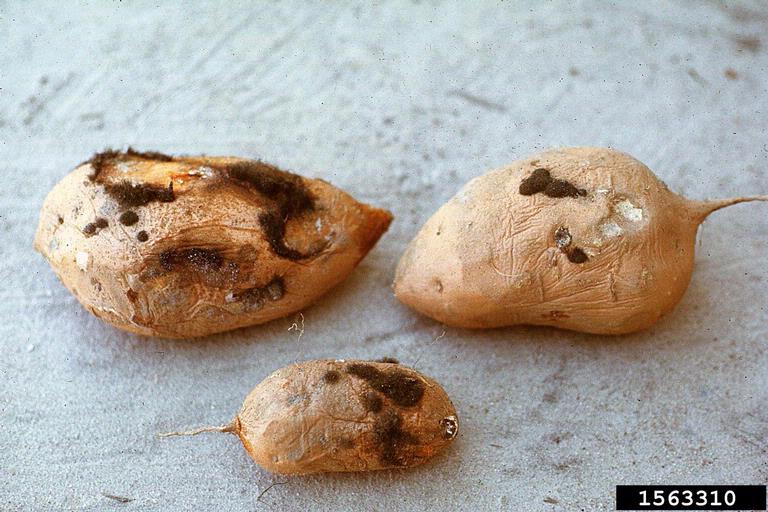
Charles Averre, North Carolina State University, Bugwood.org
Rhizopus soft rot is the most common disease found in stored sweetpotatoes. The rot is soft, wet and often white, whiskery fungal growth covers the tissue. Later black spores develop.

Charles Averre, North Carolina State University, Bugwood.org
Rhizopus soft rot showing profusion of aerial mycelia on the surface of a diseased root.

Charles Averre, North Carolina State University, Bugwood.org
Rhizopus soft rot on root in storage showing profusion of aerial mycelia and presence of black spore masses.
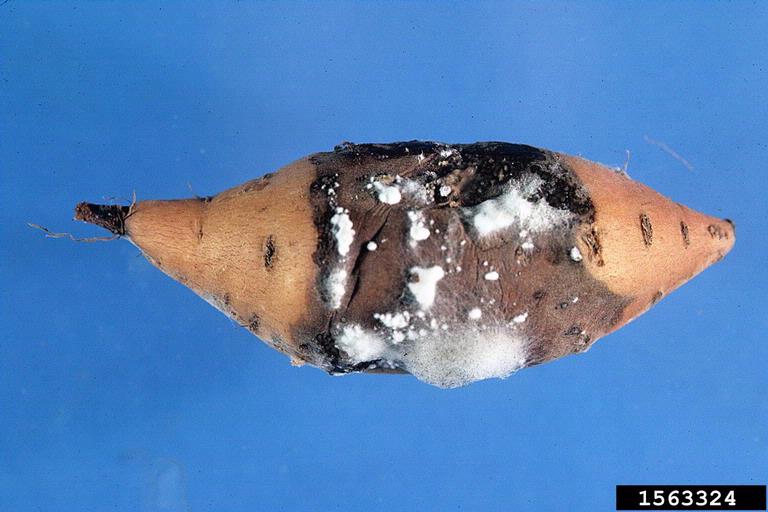
Charles Averre, North Carolina State University, Bugwood.org
Sweetpotato out of storage with soft rot. Cultivar may be Pope. Roots incubated in a moist chamber (Nov77).
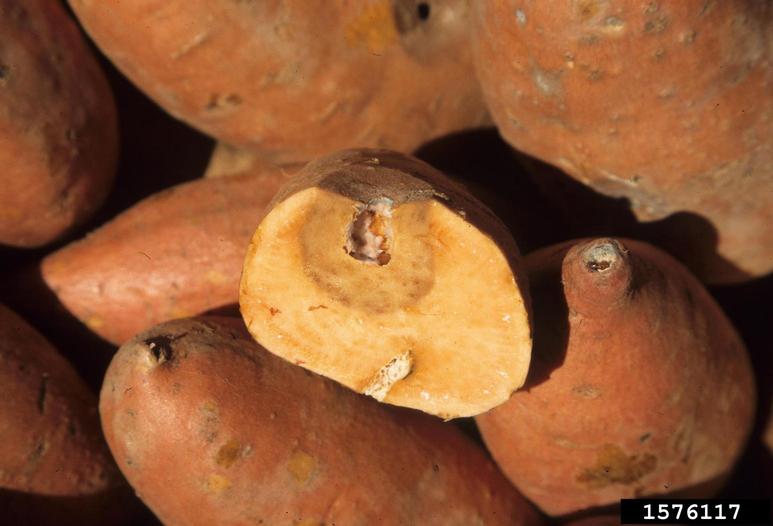
Gerald Holmes, Strawberry Center, Cal Poly San Luis Obispo, Bugwood.org
Cross section through sweetpotato root at 10 days following puncture inoculation with Rhizopus stolonifer. Note that the wound from the underside did not result in decay while the wound at the top resulted in a zone of decay, but did not progress further. March 1999
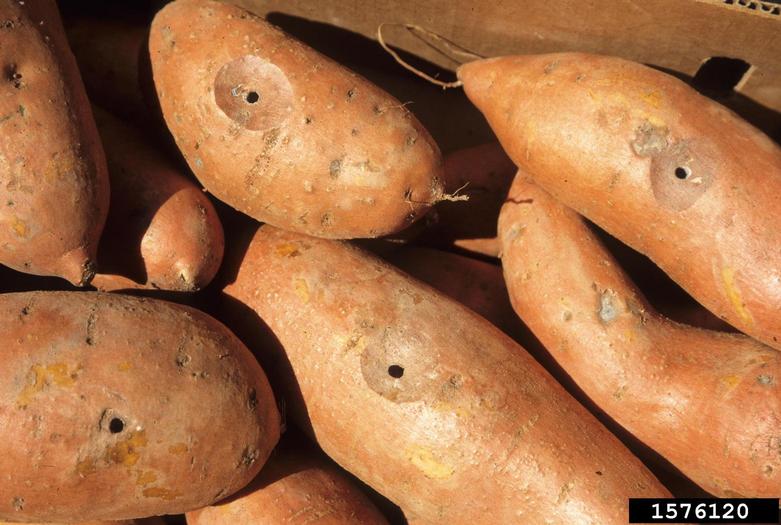
Gerald Holmes, Strawberry Center, Cal Poly San Luis Obispo, Bugwood.org
Sweetpotatoes at 10 days following puncture inoculation with Rhizopus stolonifer. Note that most roots have an area of decay surrounding the wound, but that decay did not progress further. March 1999

Gerald Holmes, Strawberry Center, Cal Poly San Luis Obispo, Bugwood.org
Roots were wounded, but not dipped in a spore suspension of Rhizopus stolonifer. No decay resulted. April 1999
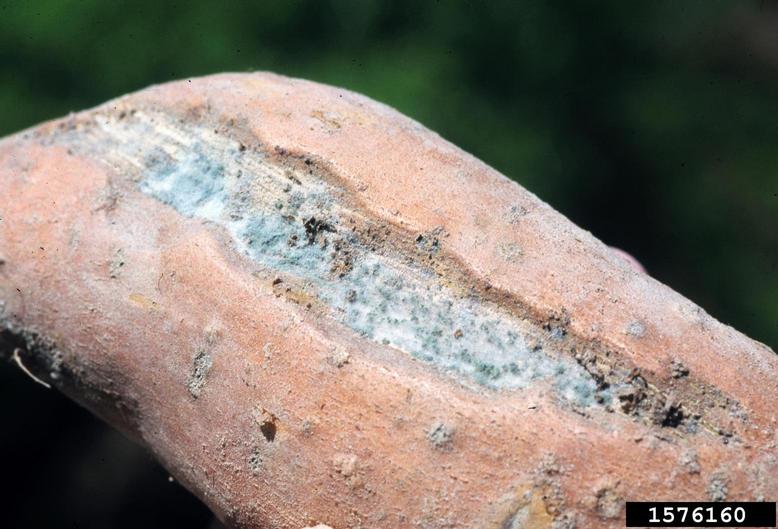
Gerald Holmes, Strawberry Center, Cal Poly San Luis Obispo, Bugwood.org
Roots were wounded (scrape method) and dipped in a spore suspension of Rhizopus stolonifer. Surface fungal growth resulted, but no soft rot developed. April 1999

Mary Ann Hansen, Virginia Polytechnic Institute and State University, Bugwood.org
bread mold (Rhizopus stolonifer) sign on sweetpotato (Ipomoea batatas)
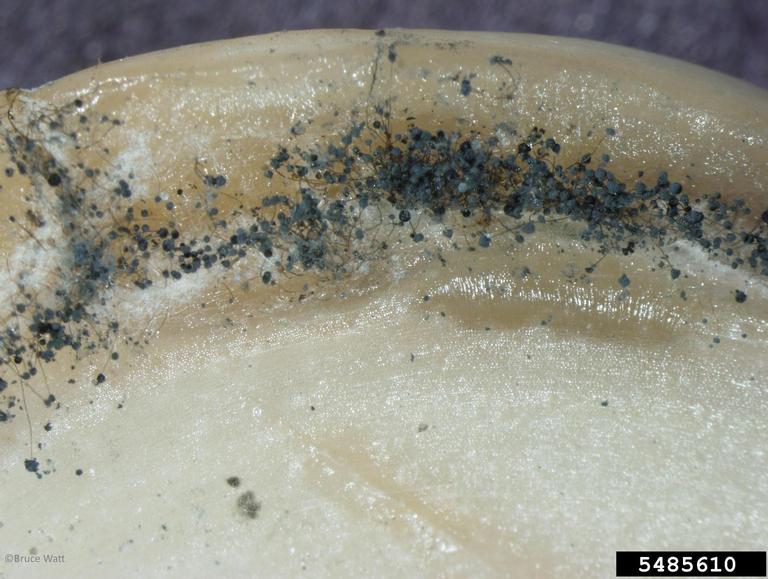
Bruce Watt, University of Maine, Bugwood.org
Sporangiophores with sporangia growing from clove.

Rotted sweetpotato showing at least two pathogens: Rhizopus (cottony growth) and Penicillium (blue-green velvety growth). April 1998

Rhizopus soft rot is the most common disease found in stored sweetpotatoes. The rot is soft, wet and often white, whiskery fungal growth covers the tissue. Later black spores develop.

Rhizopus soft rot showing profusion of aerial mycelia on the surface of a diseased root.

Rhizopus soft rot on root in storage showing profusion of aerial mycelia and presence of black spore masses.

Sweetpotato out of storage with soft rot. Cultivar may be Pope. Roots incubated in a moist chamber (Nov77).

Cross section through sweetpotato root at 10 days following puncture inoculation with Rhizopus stolonifer. Note that the wound from the underside did not result in decay while the wound at the top resulted in a zone of decay, but did not progress further. March 1999

Sweetpotatoes at 10 days following puncture inoculation with Rhizopus stolonifer. Note that most roots have an area of decay surrounding the wound, but that decay did not progress further. March 1999

Roots were wounded, but not dipped in a spore suspension of Rhizopus stolonifer. No decay resulted. April 1999

Roots were wounded (scrape method) and dipped in a spore suspension of Rhizopus stolonifer. Surface fungal growth resulted, but no soft rot developed. April 1999

bread mold (Rhizopus stolonifer) sign on sweetpotato (Ipomoea batatas)

Sporangiophores with sporangia growing from clove.






